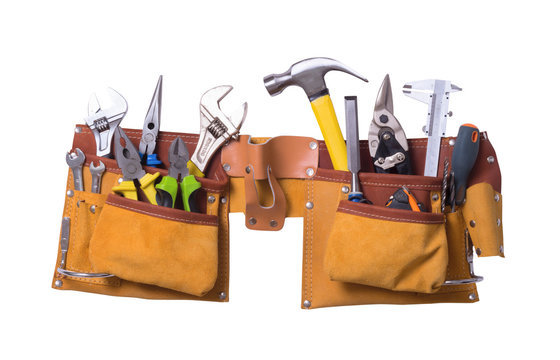Whether or not you’re a DIY fanatic, professional tradesperson, or home owner tackling small upkeep, a tool belt can be a game‑changer. It keeps gear prepared, within reach, and lets you paintings more efficiently and effectively. This article explains the whole lot—from what to look for, the way to put on a device belt efficaciously, to preservation and shopping for suggestions.
What Is a Tool Belt?
A tool belt is a wearable accessory made from a belt and wallet or pouches. It allows you to hold important tools around your waist so that your fingers stay loose. Commonplace amongst carpenters, electricians, plumbers, and DIYers, device belts store time, lessen journeys, and improve performance.
Why Use a Tool Belt?
- Hands-free convenience – Deliver your most-used gear without retaining them.
- Better efficiency – No more taking walks backward and forward to the toolbox.
- Improved safety – Continues equipment relaxed and off the ground, lowering tripping hazards.
- Better organization– Each device has its region, minimizing muddle.
Choosing the Right Tool Belt
Deciding on the right belt relies upon on your needs. Right here’s the way to compare:
Size & Fit
- Make certain the belt adjusts to fit your waist quite simply.
- It shouldn’t sag low or feel too tight.
- Search for padded or contoured belts for comfort.
Material & Durability
- Leather: conventional, robust, a long time nicely—but heavier and pricier.
- Canvas (heavy-obligation): Lighter, more low-cost, but can wear quicker.
- Nylon/artificial: lightweight and affordable, even though now not as rugged.
Pockets & Layout
- A couple of pockets assist organize exceptional tools (screwdrivers, pliers, pencil).
- Search for a hammer loop, tape clip, and massive pouches for bulky gadgets.
- Some customers prefer modular or removable pouches for flexibility.
Comfort & Weight Distribution
- Wider, padded belts help distribute weight frivolously.
- Cross-strap designs (suspenders) reduce decrease‑again stress when loaded.
Special Features
- D‑ring for equipment or gloves
- Magnetic strip for nails or small steel components
- Application knife holster or devoted tape measure slot
How to Wear a Tool Belt Correctly
Step‑by way of‑Step instructions:
- Adjust and secure the belt round your waist or hips—wherein it is most at ease.
- Distribute heavy tools evenly throughout both facets (hammer on one facet, measuring gear on the alternative).
- Position your most-used equipment in front or side pouches for smooth attain.
- If the usage of suspenders, connect them to the belt ends and regulate for help—raising the belt barely off your hips.
- Take a look at movement: bend, crouch, walk round to make sure comfort and accessibility.
- Readjust if wanted—it’s commonplace to tweak pocket placement after initial use.
Organizing Your Tool Belt Effectively
What to include:
- Hammer
- Tape degree
- Software knife
- Screwdrivers (sort of heads)
- Pliers
- Pencil
- Fasteners (nails, screws)
- Flashlight or multi-device
Placement Tips:
- Regularly used gear (screwdriver, pencil) pass closest to dominant hand.
- Heavy tools (hammer, pliers) stability left/proper to avoid tilting.
- Area objects with the aid of kind—fasteners in a single pouch, cutting gear in any other.
- Maintain sharp or pointed gear safe (blade downward or covered).
Quick‑Access Techniques:
- Use a removable small box for nails/screws that fits in a single pouch.
- Clip your gloves or protection glasses on a D‑ring.
- Stash small gear or spare bits in zip‑locked plastic bags inner wallet.
Maintaining Your Tool Belt
Cleansing:
- leather: Wipe down with damp cloth. condition with leather care products 2–3 times/yr.
- Canvas/Nylon: Use moderate soap and water; air dry fully earlier than storage.
Repairs:
- Toughen sewing if pockets loosen.
- Update buckles, clips, or suspenders as wished—many belts offer alternative elements.
- Patch rips in canvas or nylon with material restore tape or patches.
Storage:
- Empty and easy pockets after each massive use.
- Store in a groovy, dry vicinity away from direct sunlight.
- Hold it with a hook to maintain form and keep away from creases.
FAQs
Q1: Should a tool belt sit on my waist or hips?
It varies. the general public put on it at mid-hip stage—it’s comfortable and strong, however test both waist and hip positions to see what works pleasant for you.
Q2: Are suspenders necessary with a tool belt?
Not constantly. They’re useful in case you carry heavy masses often—they assist distribute weight in your shoulders and decrease lower‑lower back pressure.
Q3: How do I choose the right size?
Take a look at the producer’s sizing chart and measure your waist/hip girth. Usually leave room for adjustment for over/below layering (like iciness garb).
Q4: Can one tool belt work for multiple trades?
Sure! If it’s modular or has roomy pouches, you could transfer between carpentry, electrical, plumbing equipment easily. Modular additives make it bendy.
Q5: How much weight should my tool belt carry?
Restrict contents to around 10–15% of your frame weight to keep away from pressure. if you’re carrying greater, consider using suspenders or switching to a rolling tool device.
Conclusion
A tool belt is more than only a pouch—it’s a cellular workspace that enhances performance, comfort, and safety. Via deciding on the right material, ensuring a terrific fit, organizing wisely, and keeping it well, you’ll get the maximum out of your device belt for years.
- Choose material—leather for durability, canvas for stability, nylon for lightness.
- Fit matters—comfort is prime, so alter and take a look at before complete use.
- Organize smartly—hold your maximum-used tools close and balanced.
- Take care of it—clean, repair, and dangle it nicely.
- Adapt it—use modular factors to tailor your belt for every activity.
With these suggestions, you’re geared up to pick out, use, and keep the correct tool belt for your needs. Right here’s to happier, more secure, and extra streamlined work—belted and prepared!

